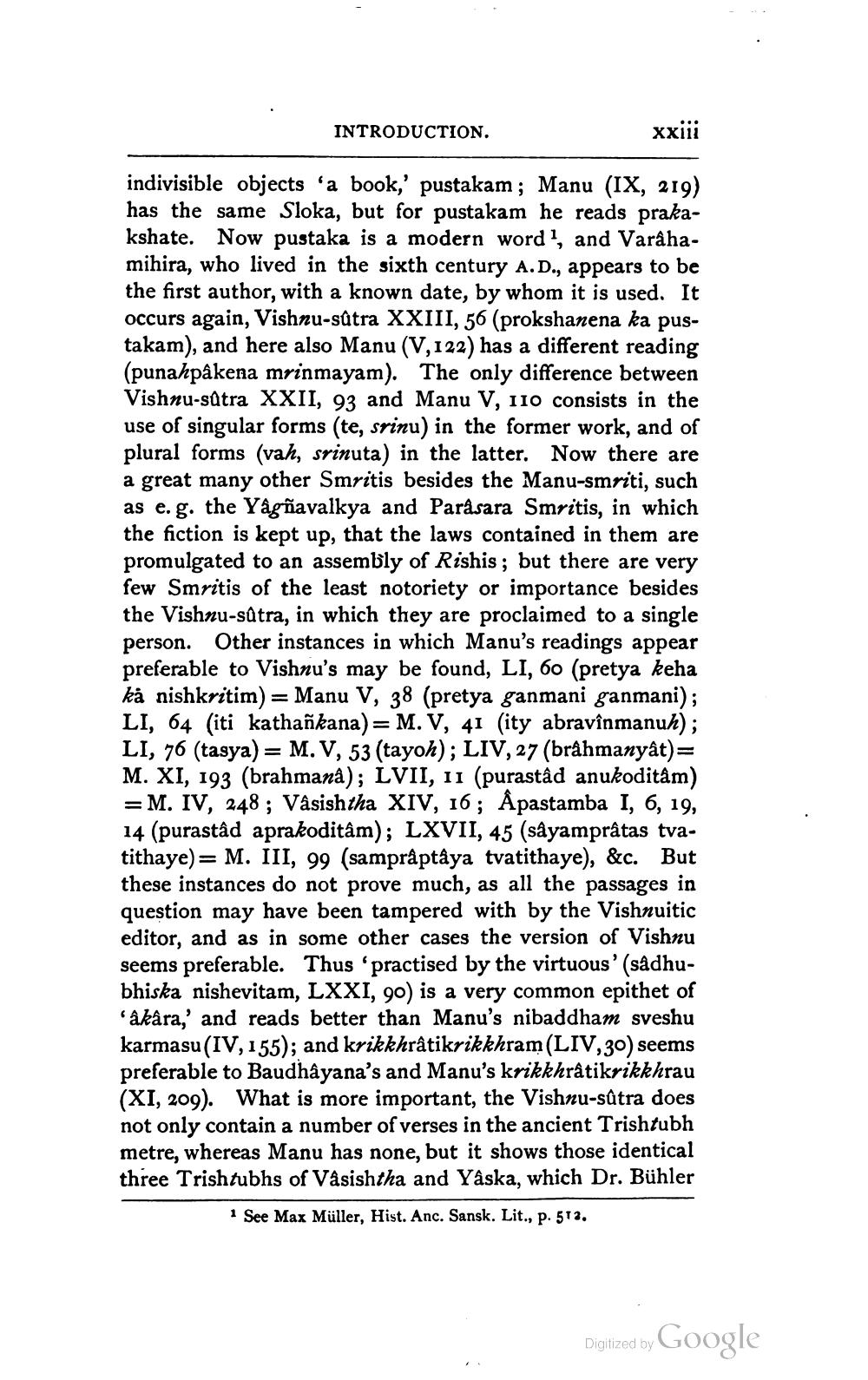________________
INTRODUCTION.
xxiii
indivisible objects 'a book,' pustakam; Manu (IX, 219) has the same Sloka, but for pustakam he reads prakakshate. Now pustaka is a modern word!, and Varahamihira, who lived in the sixth century A.D., appears to be the first author, with a known date, by whom it is used. It occurs again, Vishnu-sútra XXIII, 56 (prokshanena ka pustakam), and here also Manu (V,122) has a different reading (punahpâkena mrinmayam). The only difference between Vishnu-sâtra XXII, 93 and Manu V, 110 consists in the use of singular forms (te, srinu) in the former work, and of plural forms (vah, srinuta) in the latter. Now there are a great many other Smritis besides the Manu-smriti, such as e.g. the Yågñavalkya and Parâsara Smritis, in which the fiction is kept up, that the laws contained in them are promulgated to an assembly of Rishis; but there are very few Smritis of the least notoriety or importance besides the Vishnu-sútra, in which they are proclaimed to a single person. Other instances in which Manu's readings appear preferable to Vishnu's may be found, LI, 60 (pretya keha ka nishkritim) = Manu V, 38 (pretya ganmani ganmani); LI, 64 (iti kathañkana) = M. V, 41 (ity abravînmanuh); LI, 76 (tasya) = M. V, 53 (tayoh); LIV, 27 (brahmanyât)= M. XI, 193 (brahmana); LVII, 11 (purastâd anukoditâm) =M. IV, 248; Vâsishtha XIV, 16; Åpastamba I, 6, 19, 14 (purastâd aprakoditâm); LXVII, 45 (sâyamprâtas tvatithaye)= M. III, 99 (samprâptâya tvatithaye), &c. But these instances do not prove much, as all the passages in question may have been tampered with by the Vishnuitic editor, and as in some other cases the version of Vishnu seems preferable. Thus 'practised by the virtuous' (sadhubhiska nishevitam, LXXI, 90) is a very common epithet of 'âkâra,' and reads better than Manu's nibaddham sveshu karmasu(IV, 155); and krikkhrâtikrikkhram (LIV, 30) seems preferable to Baudhâyana's and Manu's krikkhràtikrikkhrau (XI, 209). What is more important, the Vishnu-sútra does not only contain a number of verses in the ancient Trishtubh metre, whereas Manu has none, but it shows those identical three Trishtubhs of Våsishtha and Yaska, which Dr. Bühler
1 See Max Müller, Hist. Anc. Sansk. Lit., p. 512,
Digitized by Google




